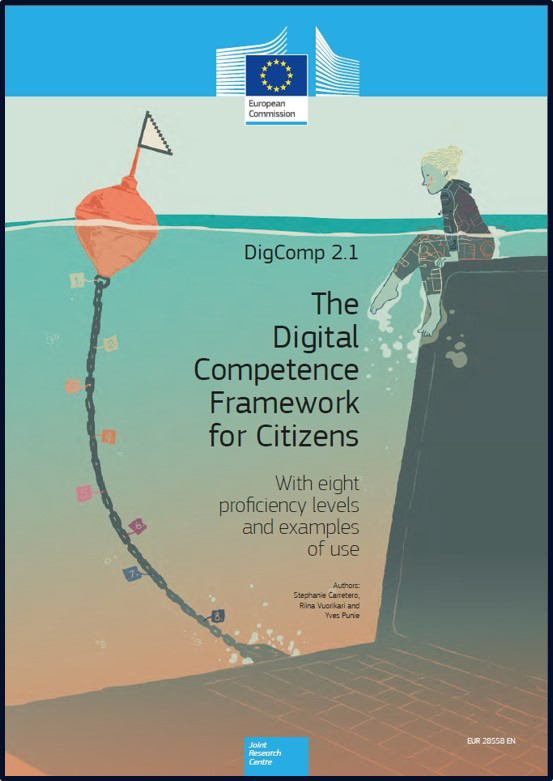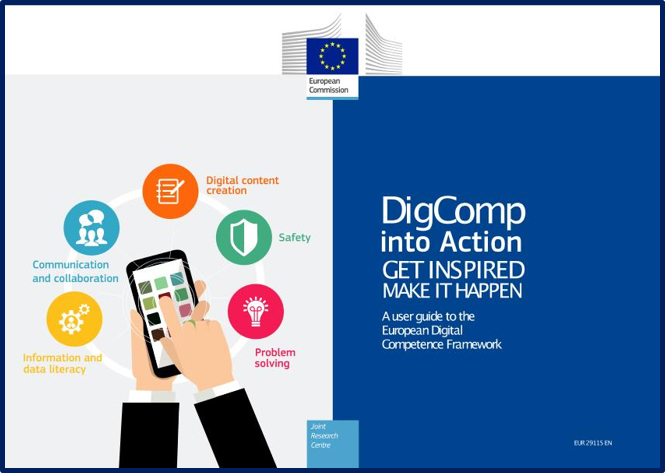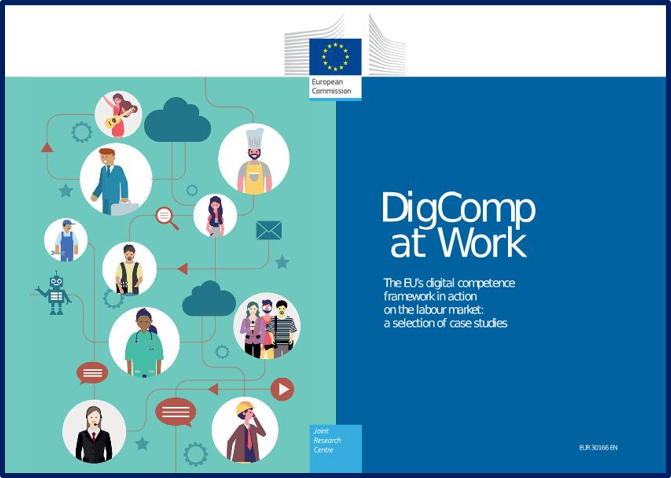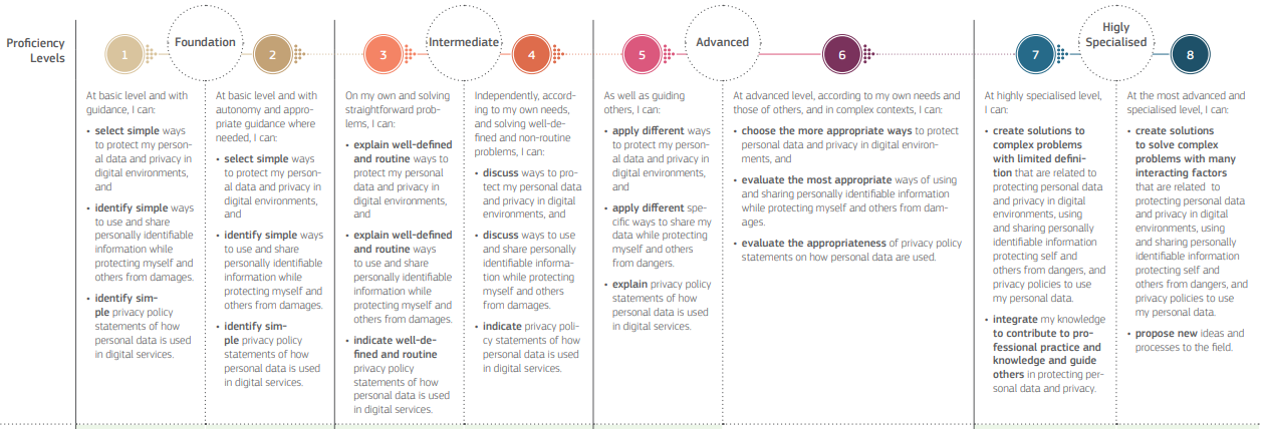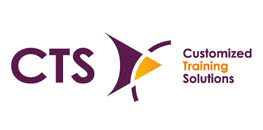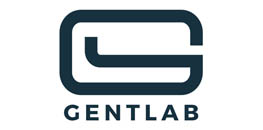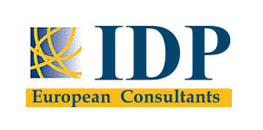|
A comprehensive introduction to DigComp 2.1 BackgroundClick to read

DigComp’s 2013 versionClick to read
 In its initial version, the DigComp included 21 competences clustered into five areas of interest:
DigComp 2.1 - follow-up-ul oficialClick to read

The JRC of the European Commission has been responsible also for the ultimate consolidation of two very important reports that summed up official exploitation of the DigComp in both educational/training settings (DigComp into Action, 2018) and employability/employment (DigComp at Work, 2020). Both documents list a very comprehensive and detailed list of case studies (nearly 40 in total) that the European Commission elected as “best practices” for DigComp’s implementation. Users can familiarise on how the DigComp can be applied within their operational context taking inspiration from consolidated and reliable lessons-learned. DigComp into ActionClick to read

DigComp at WorkClick to read

DigComp 2.1 for Cyber awareness Why the DigComp for cybersecurity?Click to read
 The DigComp 2.1 looks into IT skills and digital competences in high-demand not only in the labour market, but also in all domains of civil society and active citizenship. With that said, users can work on the DigComp as a reference and support tool to reignite and foster their understanding and overall proficiency with the aforementioned 21 competences (with particular reference to those strictly pertaining to cybersecurity) while self-assessing their progress and the ones achieved by their employees/workers. DigComp encourages users to take action in tackling and gaps and skills-lag while providing for a robust and reliable performance-monitoring model. Analysing the Safety’s pillarClick to read
 As we already mentioned, DigComp 2.1 includes 21 key competences for digital literacy and IT proficiency that are grouped among five “pillars” (i.e., training areas) and progress through an 8-level proficiency model. In the context of this training programme, it might be of particular interest for readers familiarising with the fourth pillar (i.e., Safety) – with specific reference to competence 4.1 and 4.2 (Protecting devices and Protecting personal data and privacy) For each of the two competences, you can rely on the framework and the 8-level self-assessment model to evaluate your compliance with the highest standard of performance (i.e., Advanced and High-specialised levels) 8 proficiency levels for 4.1 protecting devicesClick to read
 8 proficiency levels for 4.2 protecting privacy and dataClick to read
 Competence no. 4.1 and no. 4.2Click to read
 When it comes to cybersecurity and IT-hygiene, the DigComp can be relied on as a very robust tool to perform internal quality assurance processes while monitoring one’s compliance with the highest safety standards. Protecting devices and Protecting personal data and privacy are among the very essentials of cybersecurity for micro- and small/medium organisations. Competence levels 7 and 8 indicate the long-term impact of embracing simple action as such into formalised and structured routines. The training material developed by other Cyber-MSME partners indicates practical “tips and tricks”, recommendations and tools to achieve the cyber-hygiene of devices and data. Contributions from the fifth pillarClick to read
 All fifth pillar’s competences (5.1 Solving technical problems, 5.2 Identifying needs and technological responses, 5.3 Creatively using digital technologies, 5.4 Identifying digital competence gaps) should be considered as well as drivers of a cyber-aware mindset. Problem solving for cybersecurity response essentially to the need of an operative framework for: • Risk identification
• Risk analysis
• Risk evaluation
• Assessment, testing and validation of countermeasures
Problem solving embraces cybersecurity at large, including both new ways to approach to cybersecurity, and creative cost-effective solutions for cyber-resilience. 8 proficiency levels for 5.1 solving technical problemsClick to read
 8 proficiency levels for 5.2 identifying needs and IT responsesClick to read
 8 proficiency levels for 5.3 creative use of digital technologies Click to read
 8 proficiency levels for 5.4 identifying digital competence gapsClick to read
 Key takeawaysClick to read
 • DigComp 2.1 – the EU framework for education and training on digital skills
• 5 training areas (i.e., pillars) for a total of 21 competences
• IT security and cyber-hygiene: pillar no.2
• 4.1 Protecting devices: 8-level progression model
• 4.2 Protecting personal data and privacy: 8-level progression model
• Problem Solving: Identification → Analysis → Evaluation
|
Keywords
DigComp, Digital Skills, IT proficiency, management, education, training, problem solving, risk identification, risk analysis, risk evaluatio
Objectives/goals:In the context of this module, you will have the opportunity to familiarize with the DigComp Framework – the official EU framework for the education and training of digital skills.
DigComp establishes a common reference model for what the European Commission envisions as the key competences and skills in the domain of IT literacy and digital proficiency.
In this module you will see in which way the DigComp frames cybersecurity and the competences associated to it.
The DigComp 2.1 looks into IT skills and digital competences in high-demand not only in the labour market, but also in all domains of civil society and active citizenship. With that said, users can work on the DigComp as a reference and support tool to reignite and foster their understanding and overall proficiency with the aforementioned 21 competences while self-assessing their progress and the ones achieved by their employees/workers. DigComp encourages users to take action in tackling and gaps and skills-lag while providing for a robust and reliable performance-monitoring model.
Related training material


 Play Audio
Play Audio 



